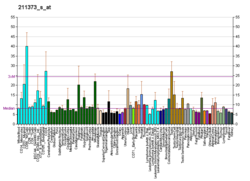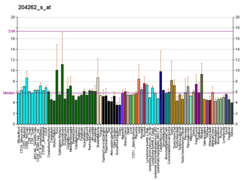Top Qs
Timeline
Chat
Perspective
Presenilin-2
Protein-coding gene in the species Homo sapiens From Wikipedia, the free encyclopedia
Remove ads
Presenilin-2 is a protein that (in humans) is encoded by the PSEN2 gene.[5]
Remove ads
Function
Alzheimer's disease (AD) patients with an inherited form of the disease carry mutations in the presenilin proteins (PSEN1; PSEN2) or the amyloid precursor protein (APP). These disease-linked mutations result in increased production of the longer form of amyloid-beta (main component of amyloid deposits found in AD brains). Presenilins are postulated to regulate APP processing through their effects on gamma-secretase, an enzyme that cleaves APP. Also, it is thought that the presenilins are involved in the cleavage of the Notch receptor, such that they either directly regulate gamma-secretase activity or themselves are protease enzymes. Two alternative transcripts of PSEN2 have been identified.[6]
In melanocytic cells PSEN2 gene expression may be regulated by MITF.[7]
Remove ads
Interactions
PSEN2 has been shown to interact with:
References
Further reading
External links
Wikiwand - on
Seamless Wikipedia browsing. On steroids.
Remove ads







